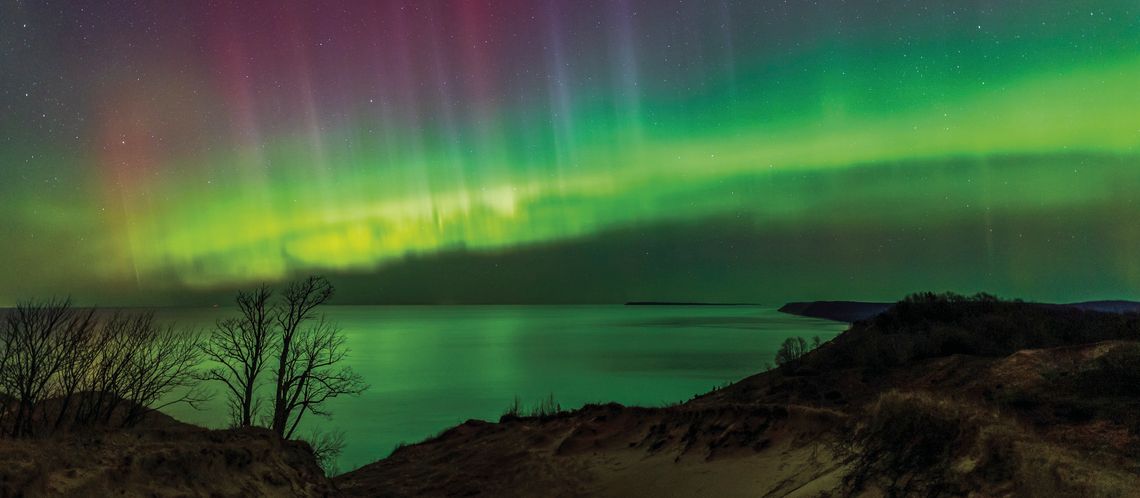Snapping sunrises, sunsets, and eventually night skies have been Leland native Ethan Hohnke’s passion ever since he first picked up a camera or cell phone.
On March 20, 2021, Hohnke saw the northern lights for the first time. “I hadn’t owned a DSLR or a legit camera before then, and then I saw the northern lights again the month after,” he said. From that point on, Hohnke was hooked. A month later, Hohnke bought his first DSLR, and it escalated from there. “It just escalated into a full-blown addiction,” he said.
There’s a major learning curve with shooting the night sky versus a sunrise or sunset or anything in daylight because of the absence of light.
“The learning curve is figuring out what your equipment can do, what you can do with your equipment, and what the max potential is with your current gear,” Hohnke said.
Self-taught through YouTube videos, Hohnke said his best tutorials came from photographers who included their settings along with any particular photo.
“This guy posted a Milky Way photo with these kinds of settings. I’d venture out the next night or the next clear night, then go from there. Once I found something that worked, it became consistent. From day one to now, I’m always learning new things and tweaking my workflow,” Hohnke said.
Hohnke said it’s crucial to have a tripod to take a quality picture of the night sky. This allows the camera to catch more light than the human eye ever could.
Hohnke said there’s no better place to get a quality night photo than the Sleeping Bear Dunes.
“I like the Sleeping Bear Dunes a lot … anywhere around the dunes area … anywhere between where the sign that starts by Good Harbor there and Point Betsie,” he said.
Hohnke also heads north to Northport for prime night conditions. Along with a dark sky, he looks for areas with water.
“Any kind of body of water. I even try to seek out general rain puddles if I can because it is a super temporary type of thing. Capture it at the moment while it’s there because it might not be there tomorrow,” Hohnke said.
He advises the best time to capture the northern lights is during astro twilight, roughly an hour and a half after sunset, around 11:30 p.m. this time of year. In the winter, it’s roughly a half hour after sunset because it gets dark so quickly.
“I hate to be general, but an hour after sunset to an hour before sunrise is kind of my general rule to see northern lights,” Hohnke said.
Hohnke uses online applications, including Space Weather Live and Facebook groups, to track space data for the best chances of seeing auroras. Space data and moon patterns will set you up to see the northern lights.
“I’m watching for the data to flip in the right direction,” he said.
But, don’t plan on getting the perfect shot quickly. It takes patience. Hohnke recommends blocking out a decent chunk of time for hunting auroras.
“Expecting to get something an hour after being out there is slightly unrealistic,” he said.
“You have to know your buttons. When you’re out in the dark, you’re not going to be able to see what those buttons are or what you’re pressing. When going out with other people, be aware of headlamps and headlights. I’ve had quite a few shots ruined by people not being aware.”
Hohnke continued by saying a DSLR isn’t the only way to capture the night sky, as this era of smartphones certainly has the capability if you have a tripod. The latest phones have the capability with their dark mode. The key is to have a five to 22-second exposure, according to Hohnke.
“The ultimate goal is to get semi-pinpoint sharp stars that look like actual stars versus any kind of movement that can look a little funky, or an airplane going through there if that makes sense,” he said.








